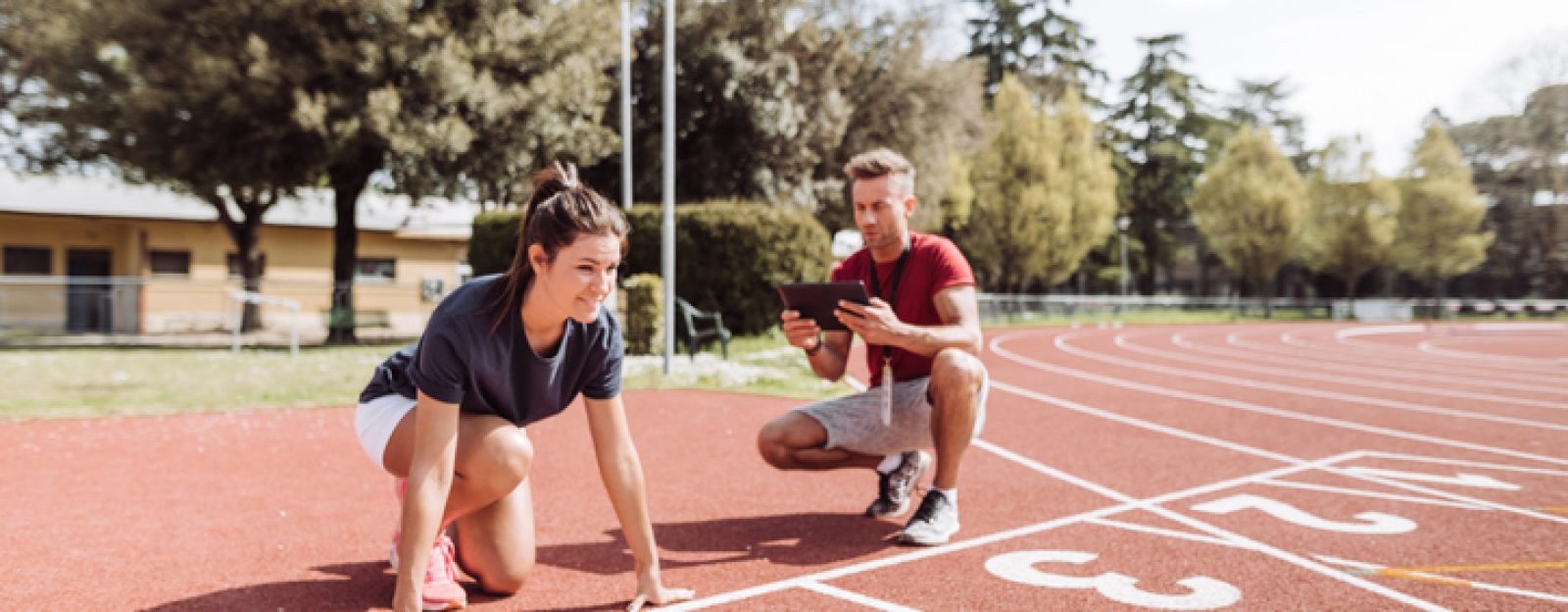High-performance coach
Also known as; Professional sports coach, elite coach, sports performance coach
High-performance coaches work with elite and professional athletes to help them achieve peak performance in their chosen sport.

What does a High-performance coach do?
Examples of coaches who work in a high-performance sport environment are individuals employed or deployed in the sport and physical activity sector who coach performance and/or elite athletes/players. Roles that such coaches may take up will be in various environments and programmes including podium potential, preparation for podium and podium (or equivalents in professional sports).
Key responsibilities of a high performance sports coach
- Develop athletes' potential
Help athletes reach their highest level of performance through structured training and support. - Plan and deliver training
Design and run training sessions that are challenging, effective, and tailored to each athlete’s needs. - Monitor progress
Track athletes’ development using performance data, feedback and regular assessments. - Create a positive environment
Build a safe, respectful and motivating space where athletes can thrive. - Work with a team
Collaborate with assistant coaches, medical staff, nutritionists, psychologists and others to support athlete development. - Set goals and strategies
Help athletes to set clear goals and create action plans to achieve them. - Support mental and emotional wellbeing
Encourage confidence, focus and resilience in athletes, both in training and competition. - Adapt and improve
Stay up to date with the latest coaching methods and adjust your approach based on what works best. - Promote fair play and inclusion
Ensure all athletes are treated fairly and respectfully, regardless of background or ability. - Lead by example
Show professionalism, integrity and a strong work ethic at all times.
Skills and behaviours
The following common or transferable skills are most frequently asked for by employers in coach job adverts across the UK:
| Skills and behaviours | % prevalence in job adverts |
|---|---|
| Coaching | 43% |
| Teaching | 38% |
| Communication | 29% |
| Planning | 13% |
| Management | 13% |
| Enthusiasm | 12% |
| Interpersonal communications | 11% |
| Teamwork | 10% |
| First aid | 10% |
| Customer service | 9% |
To find out more about the minimum knowledge and skills an individual must understand and demonstrate to become a high performance coach, you can visit our environmental specialism professional standards library.
How to become a High-performance coach
To become a high-performance coach, you first need to qualify as a sports coach. After that, you can work towards more advanced coaching qualifications.
You can learn more about starting your coaching journey on our coach career page. For extra support and guidance, visit UK Coaching, which offers helpful resources for coaches at all levels.
Training provider qualifications
A level 3 qualification is often needed to coach at high-performance level.
You can complete a non-sport-specific qualification such as a Level 3 Certificate in Coaching (Sport and Physical Activity).
Alternatively, you can complete a sport-specific coaching qualification with the national governing body (NGB) of your chosen sport.
Course entry requirements
Most level 3 coaching courses require you to hold a level 2 coaching qualification before you can begin your course. You can check the entry requirements with the course provider.
College or university
Some colleges and universities have embedded coaching qualifications and high performance sport qualifications into their sports coaching and development learning programmes.
You can browse our CIMSPA endorsed training directory to check for colleges and universities that are recognised by CIMSPA for providing quality training to students.
In the training directory, you can also check what courses our endorsed colleges and universities offer as well as course entry requirements, a summary of course content/material and more information on how to apply.
Apprenticeship
You can find out more about completing a CIMSPA-approved apprenticeship to become a sports coach via The Institute for Apprenticeships and Technical Education (IfATE) website. This will then allow you to progress to working towards the qualifications and experience needed to become a high-performance sports coach.
Professional Standards
CIMSPA is the guardian of a single professional and apprenticeship standards framework for the sport and physical activity sector – outlining the minimum knowledge, skills and behaviours an individual must understand and demonstrate for every occupation and job role in the sector.
This standards framework is driving the development of quality education products for our workforce and supporting employers in assessing which job roles an individual is qualified for.
What's the best role for you?
Check out the Training Accademy
Career paths and progression
Career pathways
Side Steps
Next Steps
Aspirational Steps
Career progression
As well as exploring new career pathways, as a high performance coach, you can also choose to progress your career by completing further training or continued professional development (CPD) in your role. This training can be added to enable high-performance coaches to show their expertise in additional populations, in different environments and with technical specialisms.
Examples of specialisms that may be added are:
- Working with children
- Working with women and girls
- Working inclusively (working with disabled people)
Find a job as a High-performance coach
The content of the job posts displayed on the CIMSPA jobs board are pulled in through feeds from websites which are not under the control of CIMSPA.
CIMSPA will not be liable for any false, inaccurate, inappropriate or incomplete information presented on the jobs board.